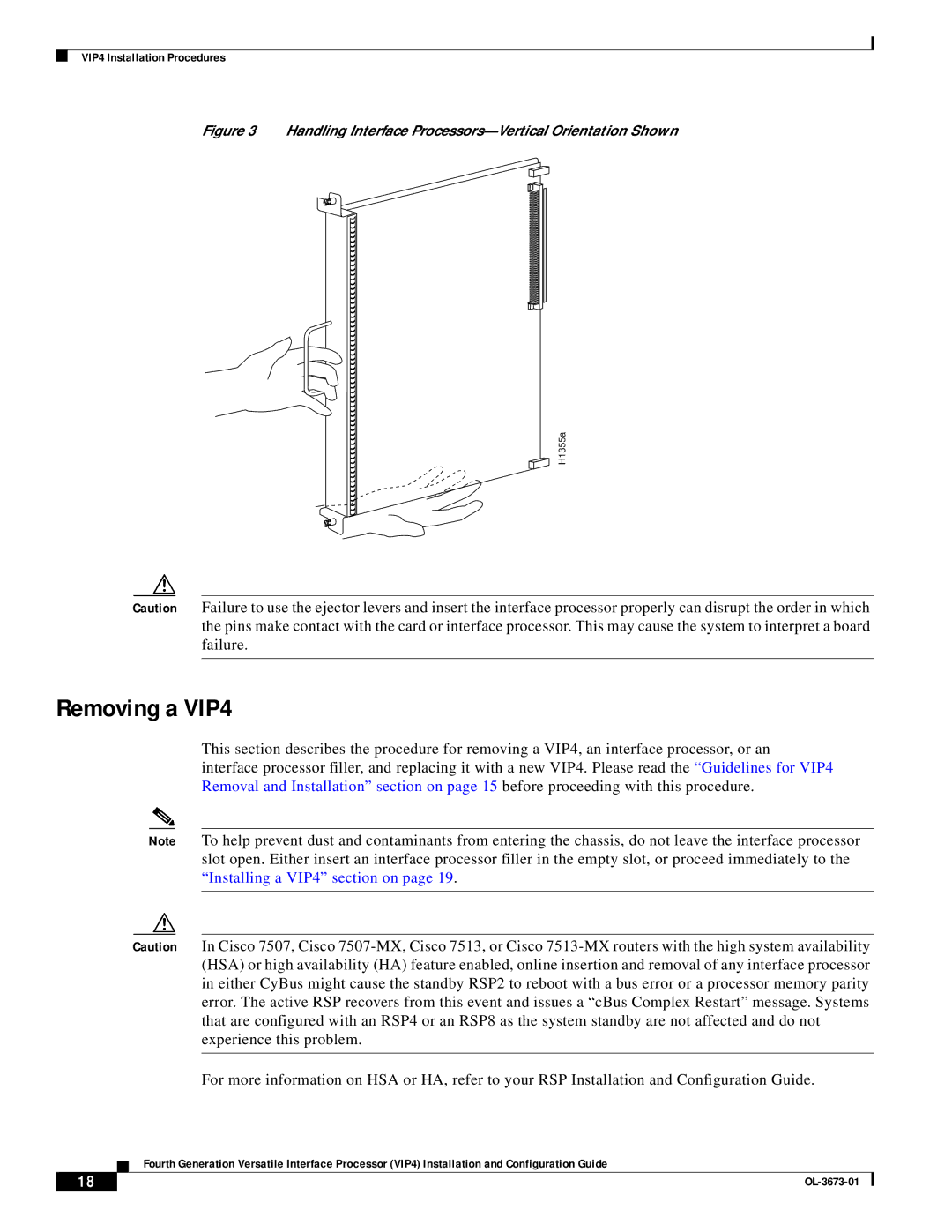
VIP4 Installation Procedures
Figure 3 Handling Interface Processors—Vertical Orientation Shown
H1355a
Caution Failure to use the ejector levers and insert the interface processor properly can disrupt the order in which the pins make contact with the card or interface processor. This may cause the system to interpret a board failure.
Removing a VIP4
This section describes the procedure for removing a VIP4, an interface processor, or an interface processor filler, and replacing it with a new VIP4. Please read the “Guidelines for VIP4 Removal and Installation” section on page 15 before proceeding with this procedure.
Note To help prevent dust and contaminants from entering the chassis, do not leave the interface processor slot open. Either insert an interface processor filler in the empty slot, or proceed immediately to the “Installing a VIP4” section on page 19 .
Caution In Cisco 7507, Cisco
For more information on HSA or HA, refer to your RSP Installation and Configuration Guide.
Fourth Generation Versatile Interface Processor (VIP4) Installation and Configuration Guide
18 |
| |
|
